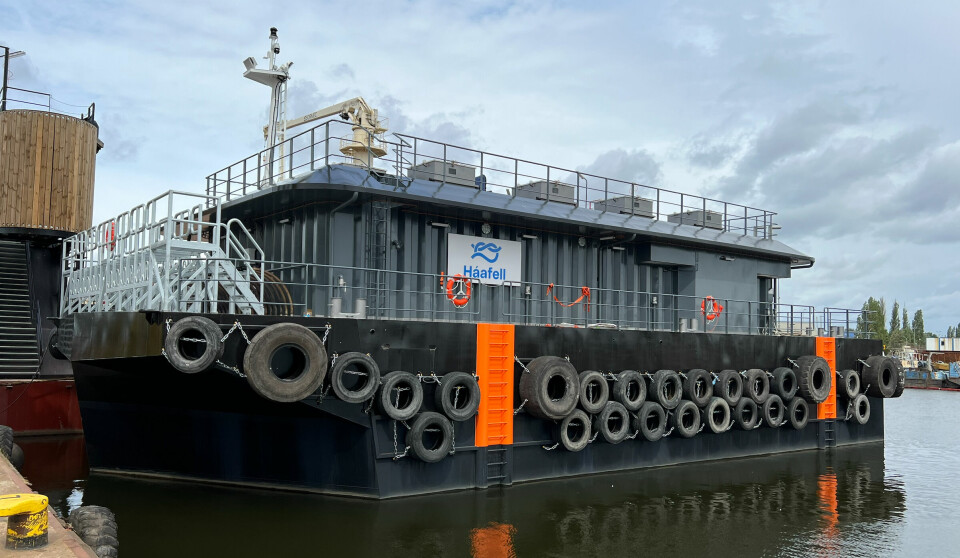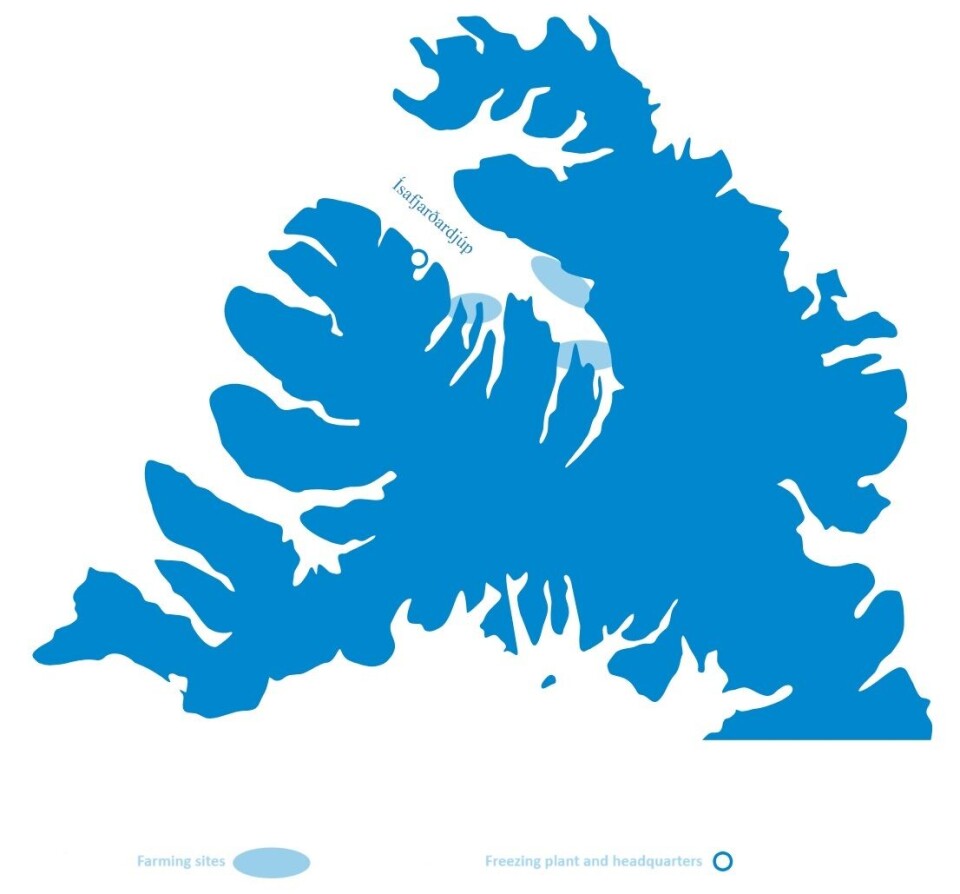
Ice-proof feed barge delivered to Iceland
A feed barge designed for the harsh environment in Northern Iceland has been delivered to Icelandic company Háafell by GroAqua, the name adopted when Faroese firm JT electric and its subsidiary Sterner Aquatech UK rebranded in April.
The barge is located in Ísafjørður in Northern Iceland and will be exposed to extreme weather conditions with temperature down to minus 20 degrees.
It can withstand a significant wave height of up to Hs 5.5m even with an additional 70 tonnes of ice on the deck. The hull has double sides, making it more robust and safer to operate while also reducing condensation on the inner walls. The barge is equipped with six feeding lines and has a capacity for 480 tonnes of feed for salmon, and five tonnes for lumpfish. All systems onboard are fully automated and remotely controlled from shore.
Hybrid power supply
The barge, which was delivered two weeks ahead of schedule, is custom designed to maximise fuel efficiency to reduce impact on the environment. A hybrid power supply powers all systems onboard, with generators running only two to four hours per day. GroAqua said this not only improves power efficiency but also reduces fuel usage and lowers carbon emissions and noise pollution.
“GroAqua has a lot of experience in building feeding barges, especially in areas with unpredictable weather and challenging seas,” said Gauti Geirsson, chief executive of Háafell, the aquaculture subsidiary of fishing and processing group Hradfrytihusid-Gunnvor Ltd, based in Hnifsdalur on the western shore of Ísafjørður.
“In this project, they have stepped further and taken icing into account to ensure better stability and safety. Furthermore, we are taking big steps toward more sustainable farming as the barge will be hybrid with a powerful battery package, and it will be prepared for shore power. In addition to this, the barge is prepared for water-borne feeding.”

Three sites
Háafell has three sites in Ísafjørður and plans to fallow one in rotation for six to nine months so it can rejuvenate itself while two facilities are in production.
GroAqua chief executive Suni Justinussen said: “We are proud of this new design that we have been working on over the past year.
“Our team has worked closely with Háafell on this barge, designed specifically for remote and exposed sites in Northern Iceland.”
GroAqua specialises in facilitating sustainable fish growth with a range of technical solutions to remotely monitor and control the feeding and breeding process, both in seawater and freshwater.
As JT electric, it has converted several cargo ships into large-capacity barges for exposed sites operated by salmon farmers Bakkafrost and Hidden Fjord in the Faroes.






















































